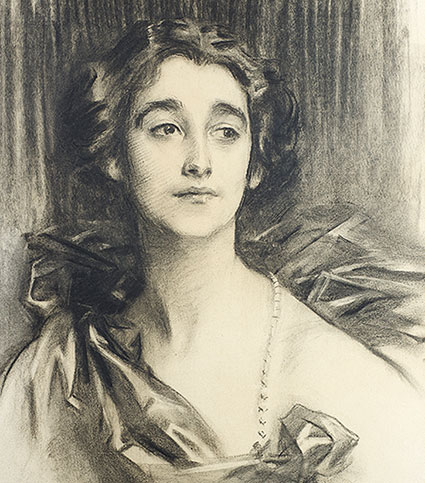Art and Museums
 The Ten Thousand-Day War at Sea: The US Navy in Vietnam, 1950-1975; Lenah Sutcliffe Higbee Awarded a Navy Cross and Destroyer Named in Her Honor
The Ten Thousand-Day War at Sea: The US Navy in Vietnam, 1950-1975; Lenah Sutcliffe Higbee Awarded a Navy Cross and Destroyer Named in Her Honor
On October 9, 2019, the gallery of the Hampton Roads Naval Museum opened to the public. Many who have visited before will recognize the familiar displays depicting the Revolutionary War through the Civil War. Everything else has changed. The immersive exhibit touches on the Navy’s role during the Vietnam War, incorporating new artifacts along with oral histories from area veterans. Editor's Note: November 11, Today in History: 1920 - Lenah S. Higbee becomes the first woman to be awarded the Navy Cross for her service as a nurse in World War I more »
 Artist in Exile, The Visual Diary of Baroness Hyde de Neuville: In 1818, she stated that she had but one wish “and that was to see an American lady elected president"
Artist in Exile, The Visual Diary of Baroness Hyde de Neuville: In 1818, she stated that she had but one wish “and that was to see an American lady elected president"
Highlights of the exhibition include Neuville’s views of the Hudson and Mohawk rivers, street scenes of her neighborhood (now known as Tribeca), a watercolor documenting an “Indian War Dance” performed for President Monroe, and portraits of subjects ranging from Indigenous Americans to immigrant students at a Manhattan school founded by the Neuvilles. The exhibition opens with Neuville’s miniature self-portrait that was likely created for her husband to carry on his travels. more »
 James Tissot: Fashion & Faith: “A painting by Mr. Tissot will be enough for the archeologists of the future to reconstruct our era.”
James Tissot: Fashion & Faith: “A painting by Mr. Tissot will be enough for the archeologists of the future to reconstruct our era.”
Tissot’s career spanned the English Channel, garnering commercial and critical success both in London and Paris. Though invited by Degas to exhibit with the Impressionists, Tissot declined. He turned to social events and balls, painting metropolitan life with great attention to detail, humor and pathos. Upon close study, even his most ebullient society pictures reveal rich and complex commentary on Belle Époque culture, religion, fashion, and politics. more »
 John Singer Sargent’s Charcoal Portraits, Records of Artistic and Cultural Friendships, as Well as Networks of Patronage
John Singer Sargent’s Charcoal Portraits, Records of Artistic and Cultural Friendships, as Well as Networks of Patronage
John Singer Sargent (1856–1925) was one of the greatest portrait artists of his time. While he is best known for his powerful paintings, he largely ceased painting portraits in 1907 and turned instead to charcoal drawings to satisfy portrait commissions. Many sitters recounted the speed and confidence with which Sargent worked; he finished most of these charcoals in less than three hours. The artist would often invite friends to drawing sessions to keep the sitters entertained and also to help enliven their features. The finished charcoal portraits are valuable testaments to Sargent’s prodigious skill as an artist and draftsman. more »






